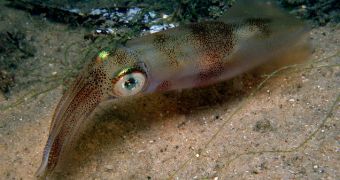A new paper in the online journal Advanced Materials details the development of a highly innovative camouflage coating that is expected to make members of the US Military invisible to infrared cameras.
What is interesting is that, according to the scientists who created it, this new camouflage coating behaves fairly similarly to the skin of run-off-the-mill calamari. But then again, its creation was inspired by these animals, so it's only natural that this should be so.
When creating this coating, the researchers started by isolating the protein that gives a calamari the ability to change color and reflect light.
This protein, dubbed reflectin, was then produced in bacteria and used to manufacture squid skin-like films that were both thin and optically active.
More precisely, their coloration and reflectance changed depending on the chemical stimuli they were being exposed to. This meant that the films could be made either visible or invisible to infrared cameras.
“The novelty of this coating lies in its functionality within the near-infrared region of the electromagnetic spectrum, roughly 700 to 1,200 nanometers, which matches the standard imaging range of most infrared visualization equipment. This region is not usually accessible to biologically derived reflective materials,” the scientists explain on the official website for the University of California Irvine.
“Our approach is simple and compatible with a wide array of surfaces, potentially allowing many simple objects to acquire camouflage capabilities,” lead researcher Alon Gorodetsky adds.
The specialists are now working on getting the camouflage coating to respond to other stimuli than chemical ones. They wish to roll out materials that change color depending on signals they receive from their surroundings.
As Alon Gorodetsky puts it, “Our long-term goal is to create fabrics that can dynamically alter their texture and color to adapt to their environments. Basically, we’re seeking to make shape-shifting clothing – the stuff of science fiction – a reality.”

 14 DAY TRIAL //
14 DAY TRIAL //